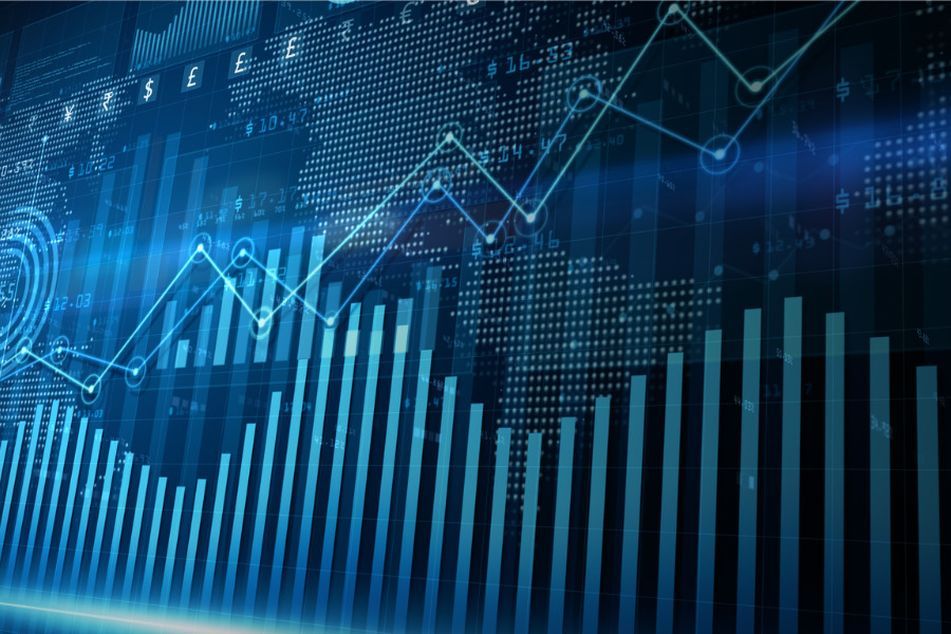Why bonds are the best since the financial crisis

Investors are weighing prospect of higher rates for longer.
The prospect of global interest rates remaining higher for longer is tipping the case for many investors to switch into bonds from stocks.
Fixed income offers a 180-basis-point yield premium over the dividend returns from stocks, according to data compiled by Bloomberg. That’s the widest in 15 years, and the gap is likely to persist or even widen as traders bet that the era of low rates has come to an end.
Investors willing to make that switch have had to stomach a brutal bond selloff that shows few signs of easing. The latest EPFR Global data suggest that the shift, even if costly in recent months, is happening as debt funds reeled in their 21st consecutive week of inflows, while their stock counterparts recorded outflows of around $2.2 billion. In major markets, investors expect yields to return to levels seen before the global financial crisis.
“Even the investment-grade bonds are giving you equity-like returns,” with half the volatility, Sanjay Guglani, chief executive officer at Silverdale Capital Pte Ltd., a Singapore-based fund manager who manages about $1 billion of assets, told Bloomberg Television. “This is a dawn of a new era for fixed income, we never had such a fantastic yields for almost 20 years.”
Global bonds are offering an average yield of 4.0%, data compiled by Bloomberg show, almost twice as much as the 2.2% dividend return for the MSCI ACWI Index. Fidelity International points out that positive real yields make the case for Treasuries even more compelling.
The next cue for traders is likely to come when the world’s top central bankers gather at the annual Jackson Hole symposium from Thursday to discuss the outlook for monetary policies. Federal Reserve Chair Jerome Powell is slated to speak Friday.
The years following the global financial crisis, when policymakers were looking to juice up economies and combat anemic price pressures with ultra-low interest rates, were the heyday for stocks, according to the metric comparing bond yields and dividend yields.
But the relationship reversed in early 2022, as the Fed kicked off its most aggressive tightening campaign in four decades. That’s because investors are betting higher borrowing costs will stymie economic growth and crimp corporate profits.
The prospect that borrowing costs may rise further — with Fed minutes published on Aug. 16 showing rate setters remain largely concerned about inflation — has pummeled equities in recent weeks. MSCI’s gauge of developed and emerging market stocks has fallen over 5% so far this month.
“We are seeing across regions, some shifts from equity to buy high-quality credit,” said Adam Whiteley, head of global credit at London for BNY Mellon Corp.’s Insight Investment. “Under the current environment of higher inflation and economic uncertainty, investors are definitely looking at bonds as a relatively safe asset that can offer an alternative to stocks.”
But, there’s still significant debate over where policy rates are headed. Treasury yields took a tumble on Wednesday as US data trailed economists’ forecasts and Citigroup Inc. noted that a short squeeze may be emerging after the recent ramp-up in bearish bets.
In contrast, equity traders had reason to cheer after a bullish earnings forecast from Nvidia Corp. spurred a rally in S&P 500 and Nasdaq 100 futures. The chipmaker’s shares soared 10% in US post-market trading Wednesday after it delivered a third-straight sales forecast that surpassed Wall Street estimates.
Skeptics also note that Japan is an outlier. Equity funds recorded a 10th week of inflows in the week ended Aug. 16, according to data from EPFR. Meanwhile, debt funds had the biggest inflow in two years in the week ended Aug. 9.
This came on the heels of a move by the Bank of Japan in July to loosen its grip on bond yields — a decision that’s expected to boost the yen over time and make domestic assets more attractive. The positive sentiment pushed the yield spread between the bonds and stocks to near the narrowest in more than two years.
Other than Japan, Asia may offer a value proposition for those arguing the case for equities. Payout ratios in the region are some of the lowest globally, “so the longer-term story for dividend growth for equities here is very compelling,” said Sat Duhra, a fund manager at Janus Henderson Investors.
NO LANDING
Meanwhile, with the odds of a US recession seen receding and large federal budget deficits increasing the supply of Treasury debt, bond yields have been surging.
Tightening bets are also pushing up rates at the front-end of the curve, with the policy-sensitive two-year Treasury yield exceeding 5% this week.
“We are looking at that bull steepening phase to start to happen and that could actually happen before the Fed even starts cutting,” Christy Tan, Asia Pacific investment strategist at Franklin Templeton, told Bloomberg Television. “There is room for the longer end of the yield curve to actually also continue to deliver income and also yield appreciation.”
Learn more about reprints and licensing for this article.








